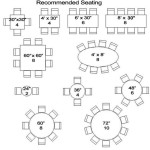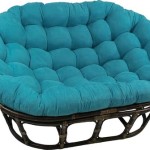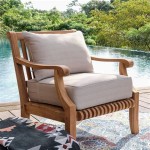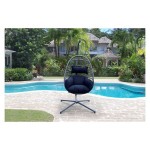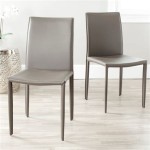Aesthetic Desk Chairs Without Wheels: A Guide to Style and Functionality
The modern workspace, be it at home or in a professional office, is increasingly viewed as an extension of personal style and a reflection of individual preferences. The days of purely functional and utilitarian office furniture are waning, replaced by a desire for pieces that blend seamlessly with overall aesthetics. Within this context, desk chairs without wheels have emerged as a popular choice, offering a unique blend of style, stability, and tailored functionality. This article explores the appeal of aesthetic desk chairs without wheels, delving into their design considerations, ergonomic factors, suitability for various workspaces, and the key points to consider when selecting the right chair for individual needs.
The absence of wheels fundamentally alters the purpose and design of a desk chair. Instead of easy mobility across a workspace, the chair provides a fixed, stable seating position. This design choice inherently lends itself to a more refined and often minimalist aesthetic. Manufacturers capitalize on this by incorporating a wider range of materials, textures, and colors that may not be practical on chairs designed for constant movement. The focus shifts from maximizing mobility to optimizing comfort and visual appeal within a defined area.
Design Considerations for Aesthetic Desk Chairs Without Wheels
The design of a desk chair without wheels plays a pivotal role in its overall aesthetic impact. Key elements include the chair's silhouette, the materials used in its construction, and the finishing details. The silhouette can range from classic mid-century modern designs with sleek, curved lines to contemporary minimalist styles with sharp, geometric shapes. The choice of silhouette directly contributes to the overall visual harmony of the workspace.
Material selection is paramount in both aesthetics and durability. Wood, metal, upholstered fabrics, and even transparent acrylics are commonly used. Wood frames, particularly those crafted from hardwoods like walnut or oak, can add warmth and sophistication to a space. Metal frames offer a more industrial or modern edge, especially when paired with minimalist upholstery. Upholstered fabrics, such as velvet, linen, or leather, provide an opportunity to introduce color, texture, and a sense of luxury. The choice of material should complement the existing décor and withstand the rigors of daily use.
Finishing details, such as stitching, button tufting, and the type of base construction, further enhance the design. Contrast stitching can add a subtle yet impactful visual element, while button tufting can evoke a sense of traditional elegance. The base of the chair, whether it's a solid pedestal, a four-legged design, or a sled base, contributes significantly to the overall aesthetic and stability of the chair. A well-designed base integrates seamlessly with the chair's overall aesthetic while providing a secure and stable foundation.
Color also plays a crucial role in the aesthetic impact of the chair. Neutral tones, such as greys, creams, and whites, offer versatility and can easily blend into a variety of workspaces. Bold colors, such as jewel tones or vibrant primaries, can add a pop of personality and create a focal point in the room. The choice of color should be carefully considered to ensure it complements the existing color palette and contributes to the desired mood and atmosphere.
Ergonomic Factors and Comfort in Stationary Desk Chairs
While aesthetics are important, ergonomic factors should not be overlooked when selecting a desk chair, even one without wheels. Prolonged sitting can have detrimental effects on posture and overall health, making proper support and adjustability crucial. A well-designed ergonomic desk chair, even without wheels, can mitigate these risks and promote a more comfortable and productive workspace.
Lumbar support is paramount for maintaining proper spinal alignment and preventing back pain. The backrest should provide adequate support for the natural curve of the lower back, encouraging a healthy posture. Many desk chairs without wheels offer adjustable lumbar support, allowing users to customize the level of support to their individual needs. The height of the backrest is also important, as it should ideally reach the mid-back to provide adequate support.
Seat height adjustability is another essential ergonomic feature. The ideal seat height allows the user to sit with their feet flat on the floor and their knees bent at a 90-degree angle. This position promotes proper circulation and reduces strain on the legs and lower back. Most desk chairs without wheels offer a mechanism for adjusting the seat height, ensuring a comfortable and ergonomic fit for users of varying heights.
Seat depth and width should also be considered for optimal comfort. The seat should be deep enough to support the thighs without putting pressure on the back of the knees. The width of the seat should accommodate the user's body size without feeling restrictive. A contoured seat can further enhance comfort by distributing weight evenly and reducing pressure points.
Armrests, while not always essential, can provide additional support for the arms and shoulders, reducing strain on the neck and upper back. The height and width of the armrests should be adjustable to accommodate the user's arm length and shoulder width. Padded armrests can further enhance comfort and prevent pressure sores.
The materials used in the seat and backrest also contribute to overall comfort. Breathable materials, such as mesh or perforated leather, can help to regulate body temperature and prevent overheating during prolonged sitting. Dense foam padding provides cushioning and support, preventing discomfort and fatigue.
Suitability for Different Workspaces and Individual Needs
Desk chairs without wheels are not universally suitable for all workspaces or individual needs. Their fixed nature makes them most appropriate for situations where minimal movement around the desk is required or desired. Evaluating the intended use of the chair and the specific characteristics of the workspace is crucial in determining whether a stationary chair is the right choice.
For home offices or study areas where the focus is primarily on focused work at a single desk, a desk chair without wheels can be an excellent choice. The stability of the chair can promote a sense of calm and concentration, while the aesthetic design can enhance the overall ambiance of the space. For individuals who prefer a more grounded and stationary seating position, a desk chair without wheels can provide a comfortable and supportive workspace.
In collaborative workspaces or offices where frequent movement between desks is required, a desk chair with wheels is generally more practical. The ability to easily move around the office can facilitate communication and collaboration. However, even in these environments, a few strategically placed desk chairs without wheels can create designated zones for focused work or individual tasks.
Individuals with mobility issues or those who require extra stability may also benefit from a desk chair without wheels. The fixed base provides a secure and stable seating position, reducing the risk of falls or accidents. Features such as adjustable seat height and armrests can further enhance accessibility and comfort for users with specific needs.
The size of the workspace is another important consideration. In smaller spaces, a desk chair without wheels can help to maximize floor space and create a more streamlined look. The absence of wheels also prevents the chair from rolling around and bumping into furniture, which can be particularly beneficial in tight spaces.
When choosing a desk chair without wheels, it is essential to consider individual preferences and needs. Factors such as preferred seating position, desired level of adjustability, and specific ergonomic requirements should all be taken into account. Trying out different chairs in person, if possible, can help to ensure a comfortable and supportive fit.
Ultimately, the selection of a desk chair, whether with or without wheels, is a personal decision that should be based on a careful evaluation of individual needs, workspace characteristics, and aesthetic preferences. By considering these factors, it is possible to find a desk chair that not only enhances the visual appeal of the workspace but also promotes comfort, productivity, and overall well-being.

15 Desk Chairs Without Wheels That Ll Make Your Space Look 10x Better By Sophia Lee

15 Desk Chairs Without Wheels That Ll Make Your Space Look 10x Better By Sophia Lee

15 Desk Chairs Without Wheels That Ll Make Your Space Look 10x Better By Sophia Lee

15 Desk Chairs Without Wheels That Ll Make Your Space Look 10x Better By Sophia Lee

Home Office Desk Chair Armless Swivel Wide Modern Adjustable Criss Cross No Wheels Velvet Mid Back Aesthetic Computer Task Vanity For Gray Walmart Com

Modern Office Armchair With Wooden Legs Accent Chair No Wheels 89cm H

Home Office Armless Swivel Chair Criss Cross Legs No Wheels Velvet Wide Seat Woven Mid Back Aesthetic For Living Room Bedroom Vanity Makeup Reading Computer Desk Task Green Walmart Com

Home Office Armless Swivel Chair Criss Cross Legs No Wheels Velvet Wide Seat Woven Mid Back Aesthetic For Living Room Bedroom Vanity Makeup Reading Computer Desk Task Green Walmart Com

5 Best Ergonomic Chairs Without Wheels For A Stylish And Functional Office Mige Furniture Factory

Home Office Desk Chair Armless Swivel Wide Modern Adjustable Criss Cross No Wheels Velvet Mid Back Aesthetic Computer Task Vanity For Olive Walmart Com
